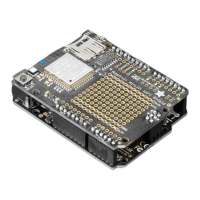Once the firmware is fully uploaded, the ESP32 will reset.
Verifying the Upgraded Firmware Version
To verify everything is working correctly, we'll load up either an Arduino sketch or CircuitPython code. At
this point, you must desolder the connections between the Optional ESP32 control pins you made
earlier using a solder sucker (https://adafru.it/FWk) or a bit of solder wick (https://adafru.it/yrC).
Arduino
If you were previously using your ESP32 with Arduino, you should load up an Arduino sketch to verify
everything is working properly and the version of the nina-fw correlates with the version the sketch reads.
Open up File->Examples->WiFiNINA->ScanNetworks and upload the sketch. Then, open the Serial
Monitor. You should see the firmware version printed out to the serial monitor.
CircuitPython
If you were previously using your ESP32 project with CircuitPython , you'll need to first reinstall
CircuitPython firmware (UF2) for your board. The QSPI flash should have retained its contents. If you don't
see anything on the CIRCUITPY volume, copy files from the backup you made earlier to CIRCUITPY .
To verify the new ESP32 WiFi firmware version is correct, follow the Connect to WiFi step in this
guide (https://adafru.it/Eao) and come back here when you've successfully ran the code. The REPL output
should display the firmware version you flashed.

